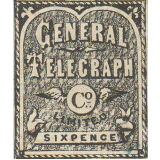 |
Telegraph stamps of Great Britain.
Until recently, only the Post Office telegraphs were well known.
This is changing but the printed information is still out of date.
I hope to gather further information and present it here.
This site has been expanding. Click here for a site-map. |
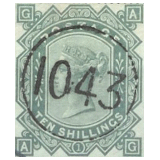 |
| Übersetzen sie |
WORKING
|
Traduisez |
| Traduca |
Traduzca |
The South Eastern Railway.
According to Philbrick & Westoby (1880), these were printed by typography in sheets of 24 (4 rows of 6 stamps).
According to Langmead & Huggins (2003), these were printed in sheets of 12 or 24.
Naturally I want to see what the evidence says.
Continuing research.
I have created a sortable table of these to aid comparison of stamps.
'Position' is within a block of 12.
You can mark a row by clicking on it and 'un-mark' it by clicking on it again.
Marking or un-marking it will display the associated image.
'Swap' swaps the images over, 'Step' opens the image following the last one in the list.
Small images can be made bigger by clicking on them, but it will not improve the resolution.
If you check 'Auto Magnify', images will be magnified as soon as they are opened.
The "position" given in this table is, simplistically, (Control mod 24) + 1.
Sources:
If anyone wants to send me a scan (300dpi or 600dpi)
of new items, I will happily update the information.
Plate layout:
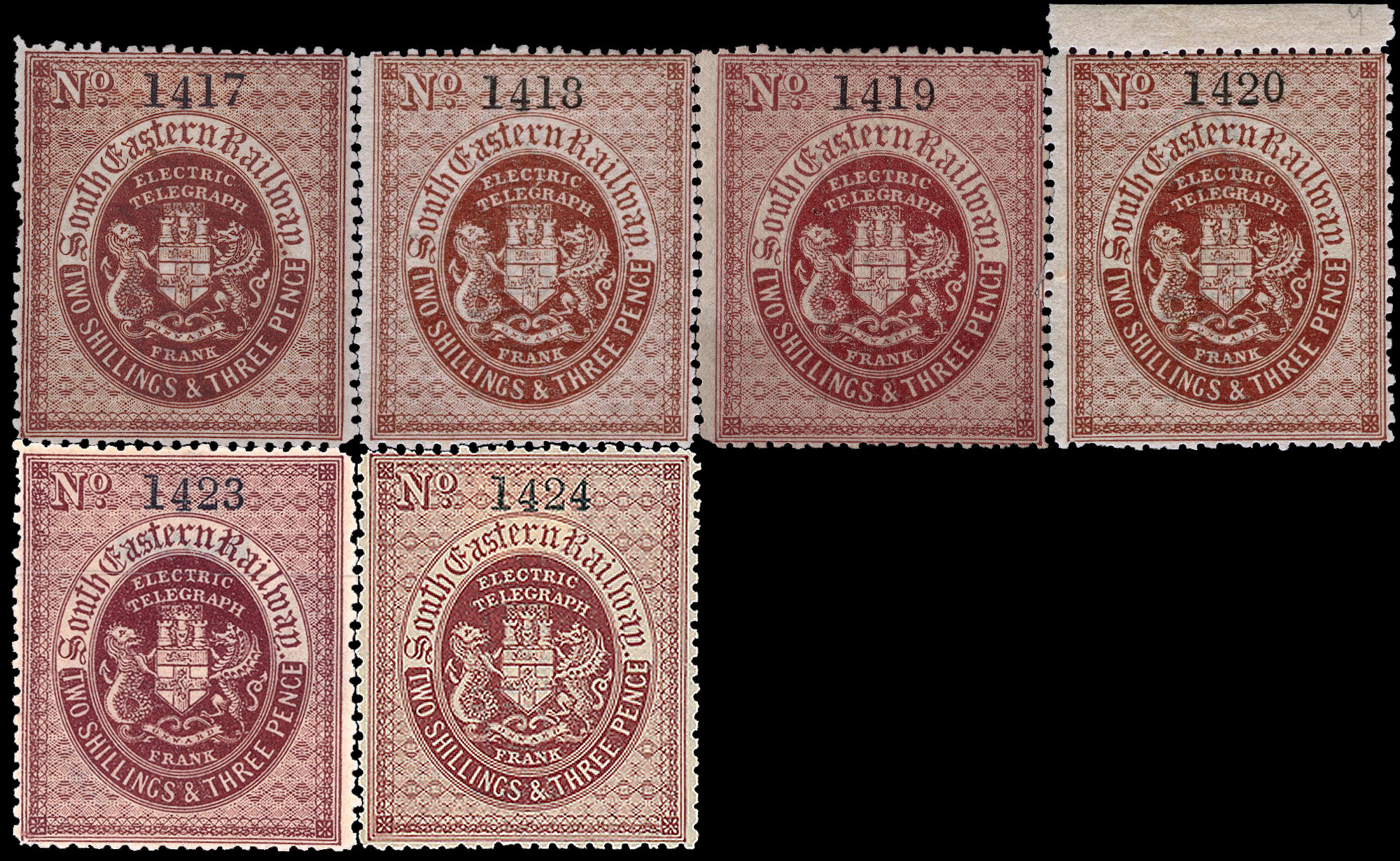 |
The above is a digital reconstruction from 4 separate 2s3d stamps. It indicates that there were 6 stamps to a row with left to right numbering.
Number 1417 is from Langmead & Huggins' book (colour plate 2), courtesy of the Great Britain Philatelic Society. Numbers 1418 and 1420 are courtesy of Stanley Gibbons,
1419 is courtesy of Steve Lawrie, 1423 is owned by Mark Gibson and 1424 is courtesy of Grosvenor Auctions.
|
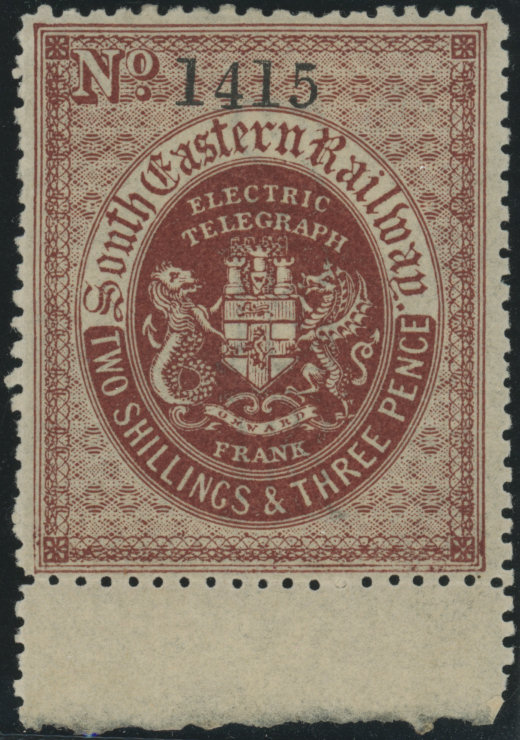
span class="fs4">
1415, courtesy of Matthew Healey, shows that 1415 was from
the bottom of a sheet. The question remains as to whether 1416 was from the
bottom-right corner or the following top-left corner. |
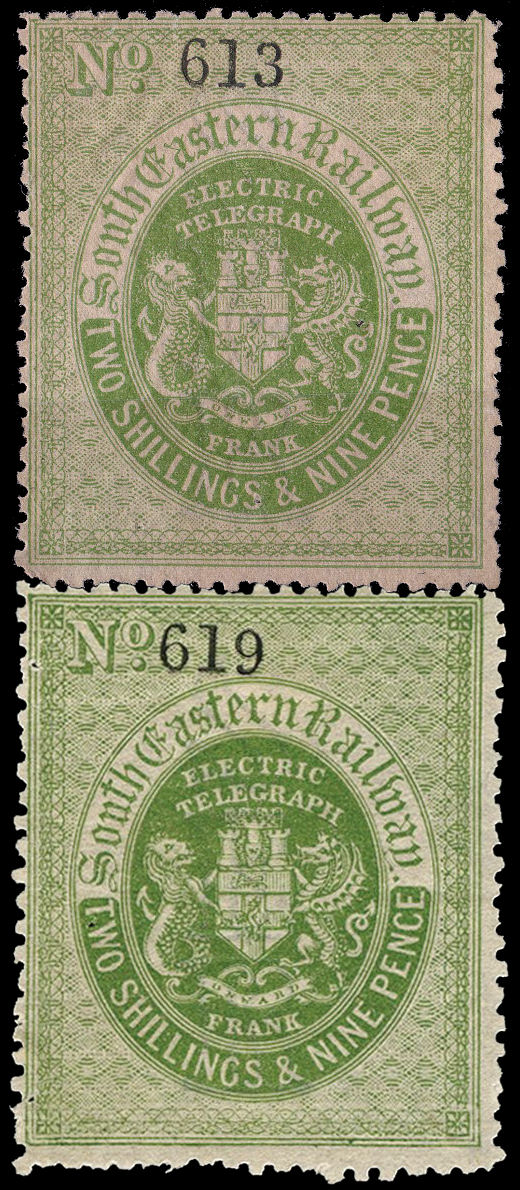 |
These fit in a left to right direction (courtesy of Mark Gibson) :
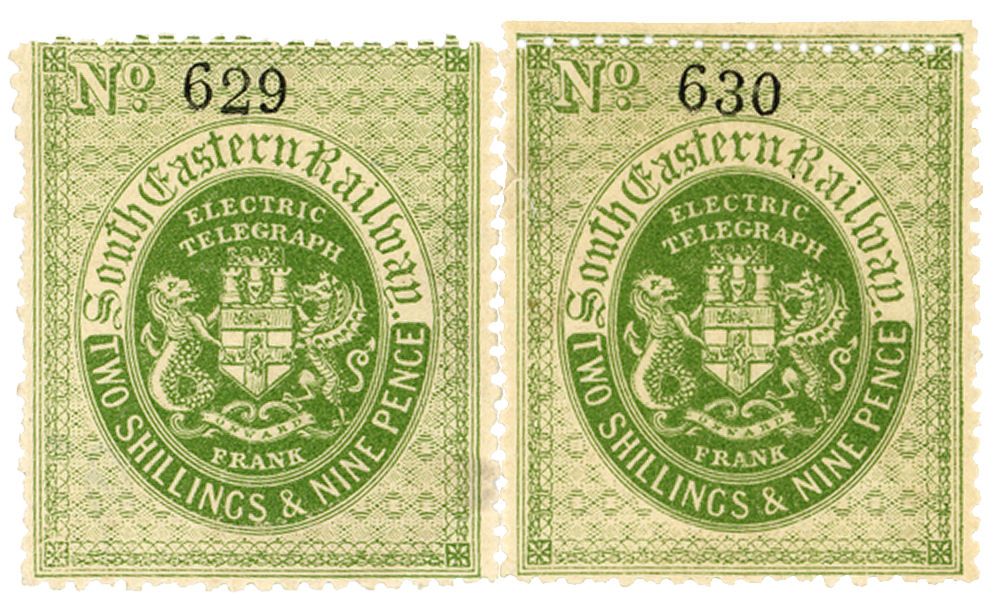
Surprisingly, these do not, they fitted together like this :
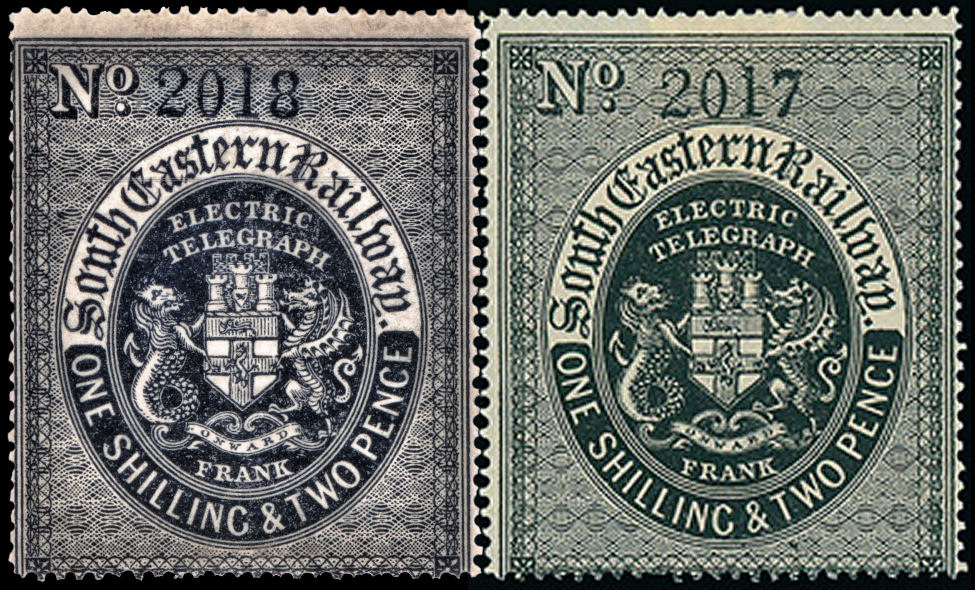 |
| |
This is a digital reconstruction from 2 separate 2s9d stamps.
It indicates that there were 6 stamps to a row.
Number 619 is courtesy of
Stanley Gibbons,
and 613 is courtesy of Steve Lawrie. |
Unusually, this digital reconstruction from 2 separate 1s2d stamps indicates that they were numbered right to left.
Number 2017 is courtesy of Grosvenor Auctions
,
and 2018 is courtesy of Mark Gibson. |
Here are the 5 scans I have from the row fitted in right to left order (half size, click it for a larger image).
Though the perforations fit together quite well, the stamps are not well aligned vertically, perhaps explaining why well-centred examples are scarce.

2020 is courtesy of Steve Lawrie, 2021 is from Langmead & Huggins' book (colour plate 2), courtesy of the Great Britain Philatelic Society.
2017, 2018 and 2019 are courtesy of Dr. Mark Gibson.
Anyone have 2022 ?
| . |
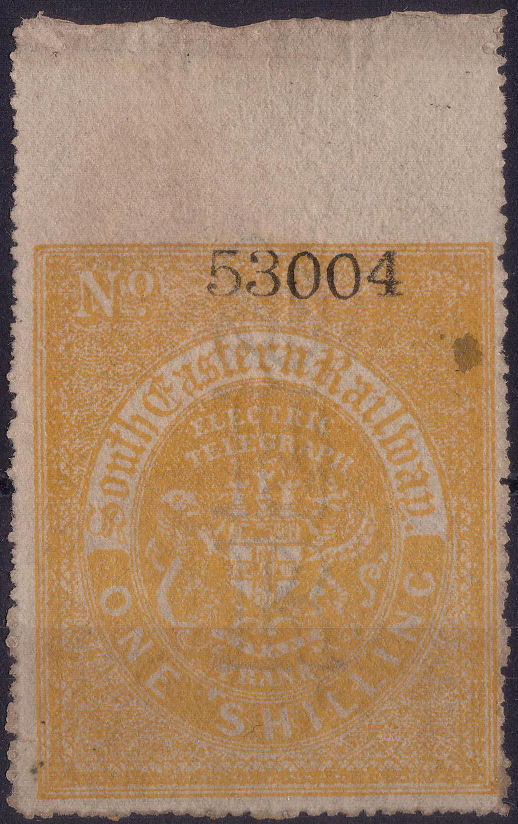 |
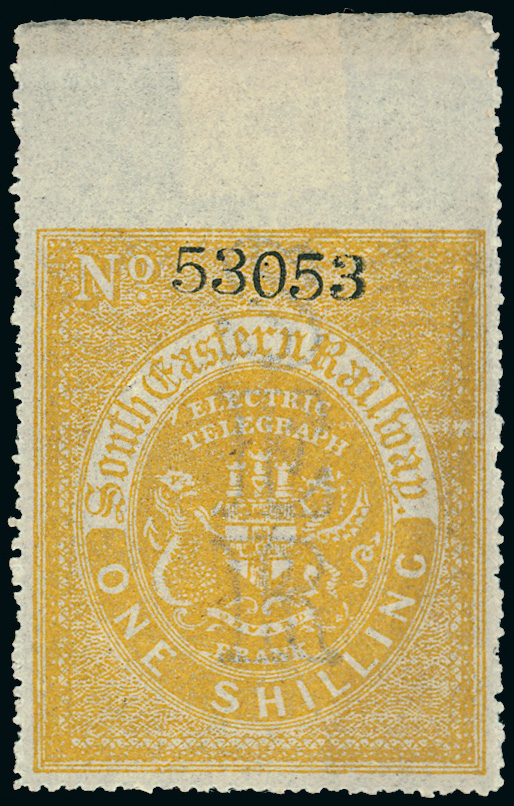 |
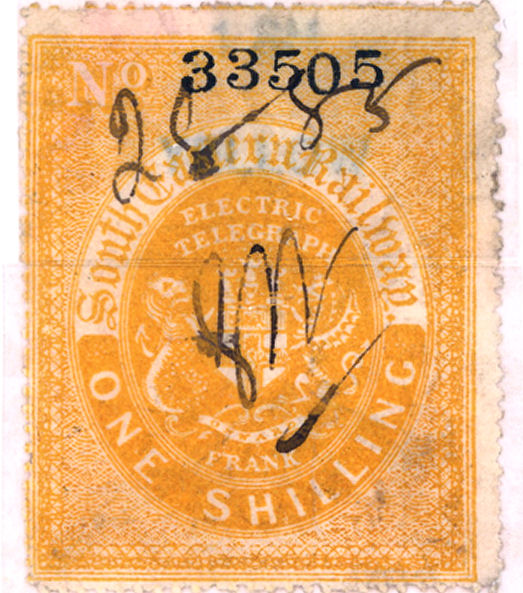 |
| 33505 dated 28/8/65 ? Hiscocks H2b - 1s, Perf. 12½ |
Hiscocks H2b - 1s, Perf. 12½ (showing watermark) |
Hiscocks H2b - 1s, Perf. 12½ (showing watermark) |
| Courtesy of Mark Gibson. |
Courtesy of Steve Lawrie. |
Courtesy of Roger de Lacy-Spencer. |
Looking at the stamps above:
The two on the right are the only ones of these I have seen with selvedge.
They are also the only mint 1/- stamps I have seen.
It is interesting that the perforations run through to the edge of the sheet
leaving the top of the stamp imperforate. The Perf.9 2s3d control 1420
has selvedge and perforations all around, and reconstructed blocks indicate
6 stamps per row.
These two stamps do however represent a rare opportunity.
I always like to know the sheet formats, how many rows of how many stamps on the sheet. I have not been able to find this information for the South Eastern Railway in the works of other writers, although Langmead & Huggins refer to
"proof sheets of 24 (4 x 6)" and "a sheet of 12 of the 9d red".
These stamps give a clue, but I need starting assumptions:
That the control numbers are consistently applied to the stamps starting
with number 1, and running left to right, top to bottom.
There are certain conventions about how many stamps in a sheet, often chosen to make accounting easier.
The stamp on the left, 33505, is clearly not on the top row since it shows part of the stamp above, so what size sheets would put number 53004 and 53053 on the top row but not 33505, given my assumption ? 54756 has selvedge on the left. |
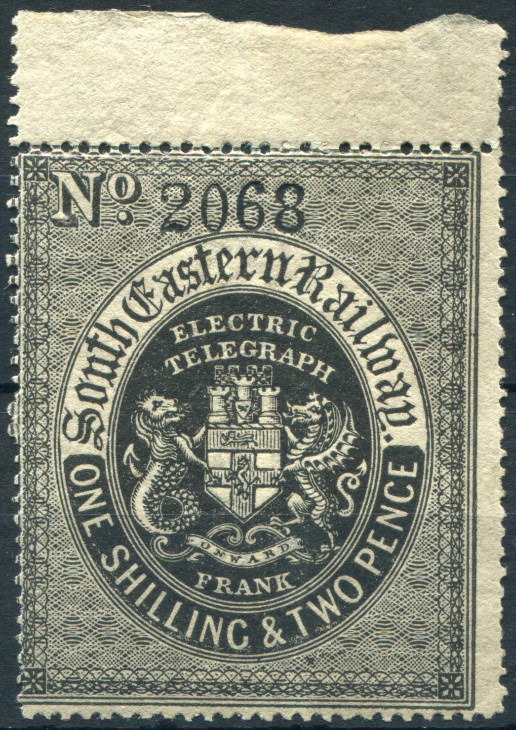
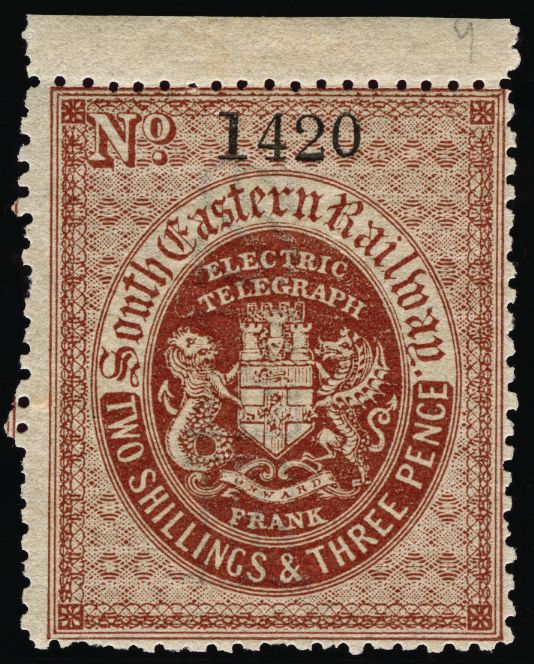
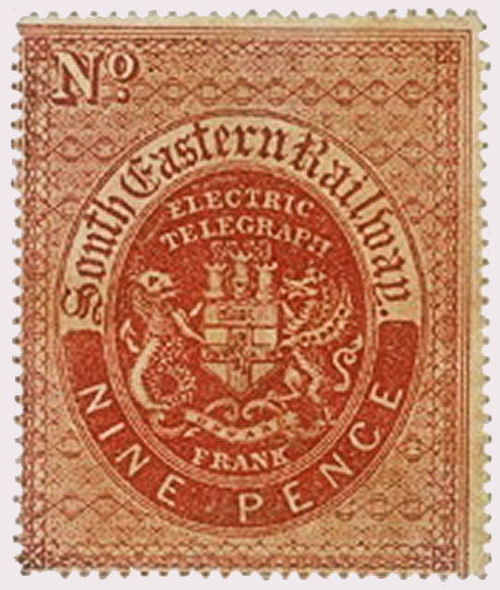
For many private telegraph issues, there
exist examples without control numbers.
These are no exception, Though I have
only this poor image. Apologies to
whoever owns this, I no longer know the
source of the image or who should be
credited.
Can anyone supply scans of this or any
other SER stamps ?
|
I made a 'widget' to decode sheet-position and block position from the control number.
Click on 'popup' to open it in another small window.
|
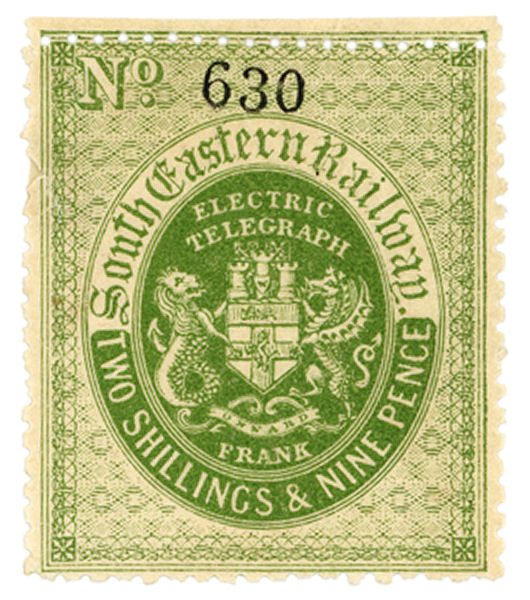
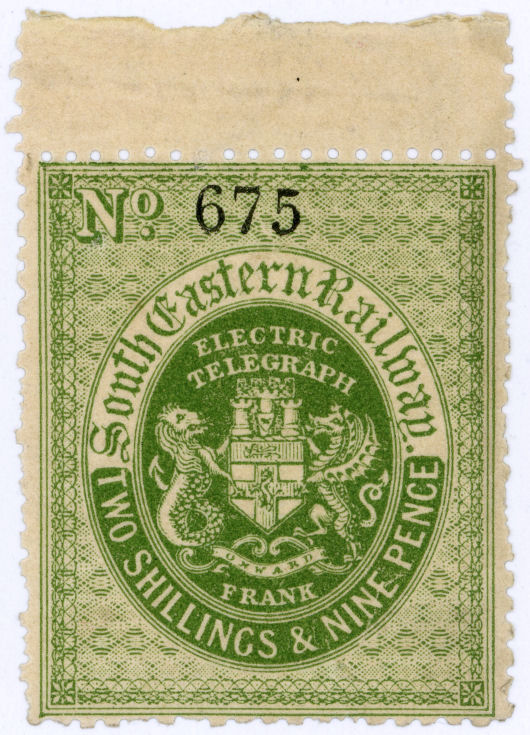
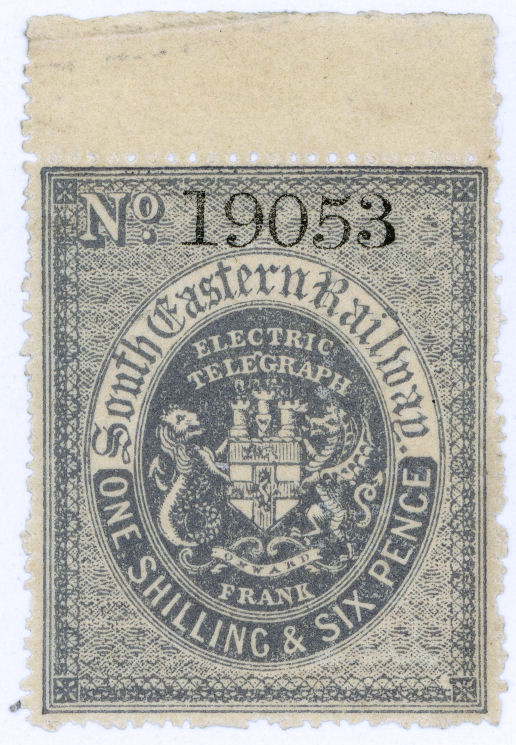
Selvedge at the top is a useful indication
of where the top of a sheet is.
Similarly selvedge at the sides is also useful.
Strangely I have no scans of stamps
with selvedge at the bottom, and only
one with side-selvedge, 1s #54756.
Two others appear to have had selvedge
cut from the left, 33399 and 51495.
Differences being 21357 and 3261 (18906 (1508 x 12)difference)
That suggests a discontinuity between 51495 and 54756.
A wasted value of 8 works for a sheet size of 24 or 48, except for 54756.
Suggesting a discontinuity before 33399 and another between 53053 and 54756,
changing the offset to 5 (or 11).
Anybody have others with selvedge ?
|
The above is only applicable to the One Shilling stamps. That is what I have the most images of. Next come the One Shilling and Six Pence.
I have only one image of the 1/6d with selvedge, 19053 which has top selvedge perforated through. That suggests that most of them will have lost their selvedge.
Comments, criticisms, information or suggestions are always welcome.

Please include the word 'Telegraphs' in the subject.
Last updated 16th. March 2023
©Copyright Steve Panting 2012/13/14/15/16/17/18/19/20/21/22/23 except where stated.
Permission is hereby granted to copy material for which the copyright is owned by myself, on condition that any data is not altered and this website is given credit.


